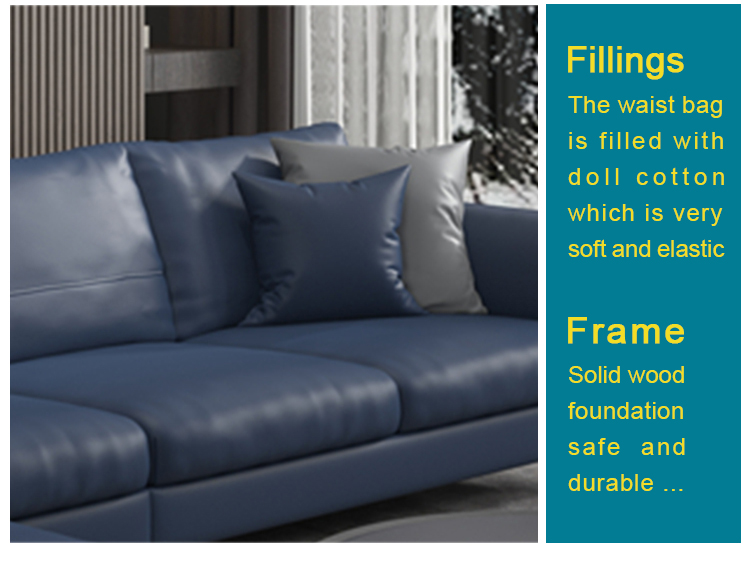Title: How to Clean Mold off a Sofa?
Mold growth on furniture can be unsightly and harmful to our health. If you have mold growing on your sofa, there are several steps you can take to clean it off. First, identify the type of mold and its severity. If the mold is minor, you can try a homemade solution using vinegar or baking soda. Mix equal parts vinegar or baking soda with water and apply it to the affected area. Let the solution sit for 15-20 minutes before scrubbing with a brush or sponge. For more severe cases, it may be necessary to use a commercial mold cleaner that is safe for use on furniture. Follow the instructions carefully and wear gloves and a mask to protect yourself from exposure to toxic chemicals. It's also important to keep an eye out for signs of mold growth in other areas of your home, such as bathrooms, kitchens, and windowsills. By taking proactive measures to prevent mold growth and addressing it quickly when it does occur, you can keep your living space healthy and comfortable for years to come.
Mold can be a serious health hazard if it grows on indoor surfaces. Sofas are often places where mold can accumulate, especially in damp or humid environments. If you notice mold growing on your sofa, it's important to clean it immediately to prevent the spread of mold spores and ensure the safety of your family and pets. In this article, we'll discuss the best ways to clean mold off a sofa and keep your home healthy and safe.
Section 1: Understanding Mold and Its Effects

Before we delve into the specific techniques for cleaning mold off a sofa, it's essential to understand the nature of mold and its potential health risks. Mold is a type of fungus that grows on organic matter such as wood, drywall, and fabric. Mold reproduces quickly and can easily spread through the air, causing respiratory problems, skin irritation, and other health issues in people with weakened immune systems or allergies.
Mold growth on a sofa can be particularly concerning because it can attract dust mites, which are known allergens that can trigger asthma attacks or worsen existing conditions. Additionally, mold colonies can release toxins into the air, further exacerbating indoor air quality concerns.
Section 2: Identify the Type of Mold and Its Origin
The first step in cleaning mold off a sofa is to identify the type of mold and determine its origin. There are many different types of mold, each with its own unique appearance and behavior. Some common types of mold include Aspergillus, Penicillium, and Cladosporium. These fungi can grow on various surfaces, including concrete, wood, and even metal.
To identify the type of mold on your sofa, take a close look at its color, shape, and texture. If the mold appears slimy or powdery, it may be a type of mildew. If the mold has a greenish or grayish cast, it may be a type of algae. If the mold has a white or brownish hue, it may be a type of moss or liverwort. Once you have identified the type of mold, you can move on to determining its origin.
Section 3: Determine the Origin of the Mold
The origin of mold on a sofa can be difficult to determine without proper testing equipment and expertise. However, there are some general factors that can contribute to mold growth on indoor surfaces:

1. Moisture: Mold thrives in environments with high humidity or moisture levels. Check for any leaks in your home's plumbing system or around windows and doors. Ensure that your living spaces are well-ventilated and dry.
2. Temperature: Mold growth is also affected by temperature. Most mold species prefer temperatures between 60°F (15°C) and 90°F (32°C). Keep your home at these temperatures or use a dehumidifier to reduce moisture levels.
3. Organic Material: Mold feeds on organic matter such as dirt, dust, and dead skin cells. Regularly clean your furniture and floors to remove accumulated debris that can harbor mold spores.
Once you have identified the factors contributing to the growth of mold on your sofa, you can take steps to address them effectively. This may involve fixing leaks, installing ventilation systems, or using anti-mold products specifically designed for furniture.
Section 4: Clean Up the Mold Properly
Now that you have identified and addressed the causes of mold growth on your sofa, it's time to clean up the mold itself. The following techniques can help you safely and effectively remove mold from your furniture:
1. Vacuuming: Use a vacuum with a HEPA filter to remove as much mold as possible from the surface of your sofa. Be sure to turn off the power switch when you're finished vacuuming so that no mold spores remain in the motor or air vents.

2. Steam Cleaning: If you have a steam cleaner, consider using it to kill any remaining mold spores on your furniture. Steam cleaning can be effective at killing most types of mold without leaving behind any harmful residues.
3. Chemical Cleaners: There are several chemical cleaners available that are designed specifically for removing mold from furniture surfaces. These cleaners typically contain fungicides that attack and destroy mold colonies while being safe for humans and pets to use around them. Follow all instructions carefully when using chemical cleaners to avoid damaging your furniture or exposing yourself to toxic fumes.
4. Professional Cleaning Services: If you have extensive mold growth on your sofa or other large pieces of furniture, consider hiring a professional cleaning service to handle the job for you. Professional cleaners have access to specialized equipment and chemicals that can effectively remove even the most stubborn forms of mold from furniture surfaces.
In conclusion, cleaning mold off a sofa is an important task that requires careful attention to detail and proper techniques. By understanding the nature of mold and its potential health risks, identifying the type of mold and its origin, addressing the causes of mold growth on your furniture, and using appropriate cleaning methods, you can effectively remove all traces of mold from your living space and create a healthier environment for yourself and your loved ones.
Articles related to the knowledge points of this article:
Title: The Art of Tie Knots: Understanding the Significance of Wearing a Tie in Formal Settings
Title: Mastering the Art of Tie Knots: A Comprehensive Guide to Tying a Perfect Bow Tie
Paper Tie Knotting: Creative Ways to Craft an Elegant Look
Title: The Art of Silk Scarves: An Exploration of their Versatile and Timeless Material
Title: Mastering the Art of Tie-Dyeing Scarfs with Long Silk Scarves



